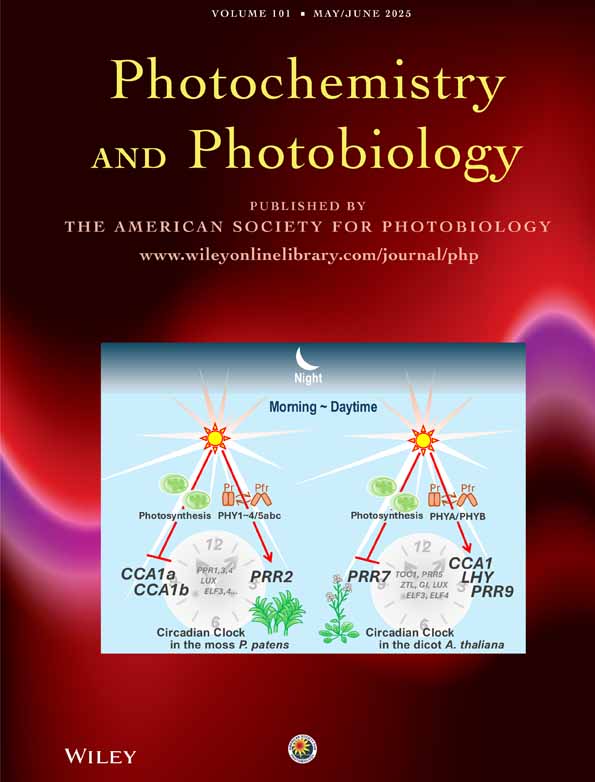Reactivity of Singlet Oxygen with Tryptophan Residues and with Melittin in Liposome Systems
Abstract
The reactivity of singlet oxygen, 1O2, with amino acids, polypeptides and proteins has been studied extensively in solution, in micelles and also in vesicles. Here we attempt to examine its reactivity with iV-acetyltryptophan amide (NATA), with a tryptophan residue with a long aliphatic chain attached, Trp(CH2)16, and with melittin–a small membrane protein–in a solution containing liposomes. In such a heterogeneous system the sensitizer and/or the tryptophan residue can be located in the ambient DzO, in the liposome membrane or at the membrane-solution interface. The sensitizer meso-tetra(N-methyl-4 pyri-dyDporphine tetratosylate (mTPTT) is located in the aqueous phase while hematoporphyrin (HP) is embedded in the membrane. The quenching of 1O2 by the tryptophan residues and by melittin in solution, when using either of the sensitizers, was compared with the data in the liposome-containing system. It was found that the location of the sensitizer and of the quencher in the liposome membrane or in the surrounding solution greatly affects the quenching rate constants of 1O2.




